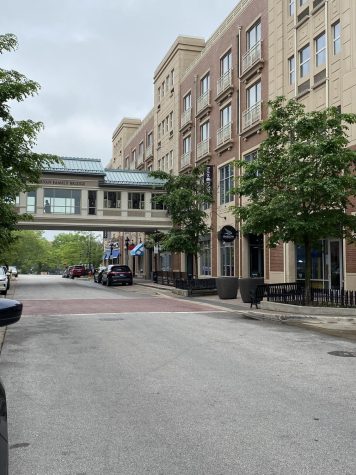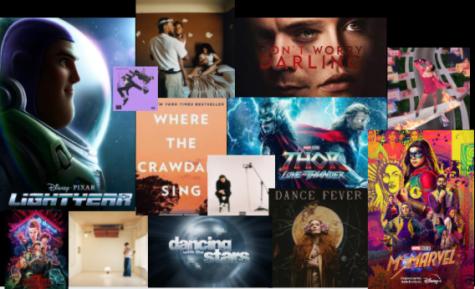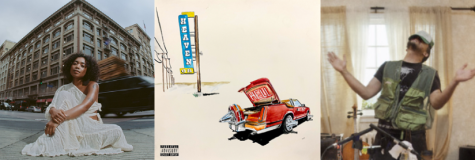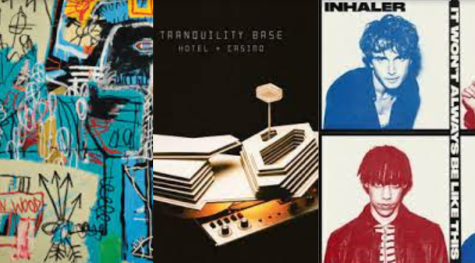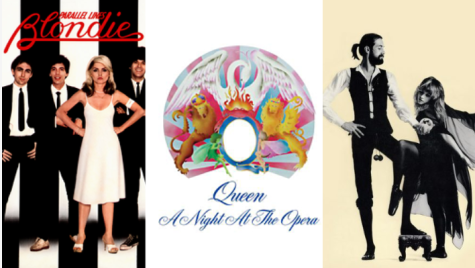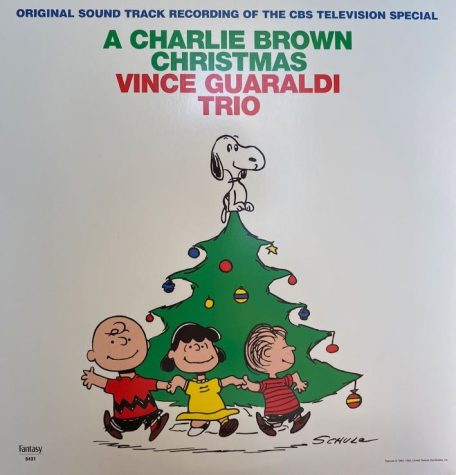Column: Cinematography Behind the Film
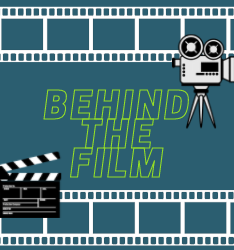
Photo by Grace Ainger
Films are beautifully complex. So many elements come together to make a message run clear. However, some of these production elements are rarely recognized or understood. From cinematography to lighting, let’s go behind the film.
This edition is all about cinematography: the art of the camera. A less popular category at the Oscars recognizes the best purposeful movements of the camera, where the camera is placed relative to a person’s face or how it represents a character’s mental state. How do these tools enhance a film? Let’s find out.
One of the most important uses of cinematography is an establishment of a tone. Certain genres of film use different camera angles and stabilities. For example, horror and thriller films tend to use shaky, sharp camera movements and close-up angles to increase suspense, while lighter films shoot from further out with much smoother camera movements. One of Netflix’s newest shows, “The Woman in the House Across the Street from the Girl in the Window,” pokes fun at these typical thriller tropes, specifically in camera movements. The satire-natured show flips the typical cinematography uses of the genre and has mostly smooth camera work, especially in more suspenseful scenes.
In a less comedic way, “12 Angry Men” uses these same tone-setting film techniques. The entire movie is set in a jury room as the 12 jury men debate sending a man to jail for murder. 11 members are certain he is guilty, but one is doubtful, causing the jury to more carefully consider the evidence of the case. As the tension increases and we get closer to a verdict, the camera shows eye-level close-ups. As we slowly learn more about each member of the jury pool and their personalities, their thought process and what it takes for them to crack under the pressure, the camera brings the audience into the life or death situation and the true tension of the room.
Another common camera tool is a match cut. Essentially, the camera movements or angles match, mirror or reverse a different scene under a different context or tone. It’s used mostly to show different situations under a different lens. Popular artist and debut director Taylor Swift demonstrated mirror cinematography in the film for her song, “All Too Well.” The 10-minute version of the song and the film provide a much deeper look into the previous relationship between Swift and Jake Gyllenhaal. The film and song explain the happy beginnings of their relationship, which soon turns sour. After the eventual breakup, the tone and filming techniques used in the video shift. We first see match cuts in a past conversation between Jake (Dylan O’Brien) and her father at table with Taylor (Sadie Sink) in the middle. The camera moves away from Taylor’s face until the flashback ends, and then towards Taylor. During this, the scene and time period changes. The camera work shows that despite her change in circumstances, she continues to be herself.
Match cuts are also used quite a bit in the Amazon Prime hit TV show “The Marvelous Mrs. Maisel.” In the first season, newly separated and independent Miriam (Midge) Maisel is moving out of her apartment in 1958. As the camera moves through the apartment, we get flashbacks to Midge moving into her apartment with her ex-husband. The camera movements are the exact same, just in reverse. Compared to her very dependent self in flashbacks, Midge is taking control of her life, or in this case, taking control of the camera. She’s “redefining” the scenes, and taking control of her life again. The show uses another common cinematography practice: oners. Oners are when the camera shoots a scene with no cuts. “The Marvelous Mrs Maisel” season two opener is a one minute and 17 second long shot of Midge at her job as a switchboard worker. She moves swiftly and smoothly through the tiny room, helping her fellow coworkers with little difficulty. The one shot helps solidify the tone of the new season, that Midge continues to thrive despite adversity. With cuts and different cameras, the smoothness and ease of Midge’s ability to do her job would not have been portrayed. It needs to feel simple to the audience, when it is anything but. The show very rarely uses heavy cut shots in their scenes. During Midge’s comedy acts, the camera rarely cuts away from Midge or uses unnecessary angles. In her comedy acts, she speaks a lot about her real life. The continuous shots once again represent her excellence at what she does and ability to thrive in tough environments.
Cinematography is incredibly important to establishing the tone of a scene. The camera can move smoothly to emphasize calm feelings or create suspense with sharp cuts and shaky frames. Close camera angles can increase suspense while wide shots create a full scale environment for the audience to immerse themselves in. Cinematography is one of the most vital elements in filmmaking and yet still not recognized enough.

Grace is a senior at North and is thrilled to begin her second year of The North Star as Managing Editor. She’s excited to pursue her own journalistic...


